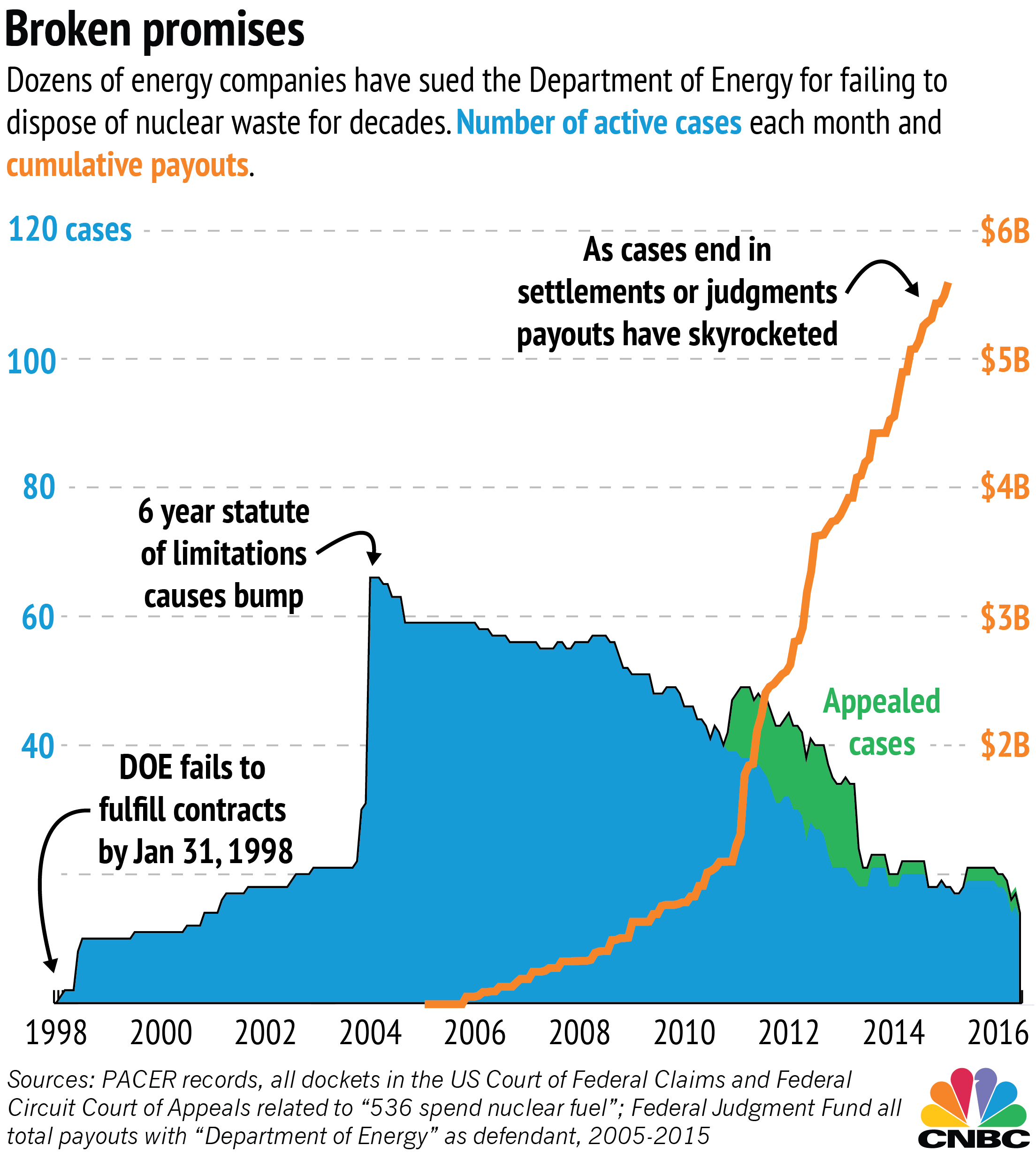If you were to guess which government agency has had to pay out the most in court in recent years, the Department of Energy probably wouldn't come to mind.
Yet the DOE is among the most prominent defendants requiring payment from the Judgment Fund, which pays for claims against the government. The department paid out more in legal claims than any other agency last year and the year before, according to the fund's records — more than $5 billion over the last decade.
And according to the department itself, the bloodletting is far from over. The DOE has failed to make good on some of its most important contractual obligations for years, and its private partners have been collecting billions in damages.
The Nuclear Waste Policy Act of 1982 requires that the DOE dispose of nuclear waste being produced at civilian energy plants around the country, which in turn pay fees for a long-term storage facility. The department's contracts with dozens of energy companies said it would start disposing of the waste in 1998.
The companies held up their end, feeding about $750 million into the Nuclear Waste Fund each year. But the department did not manage to set up any facility to receive the waste, forcing energy companies to store it themselves on-site.





